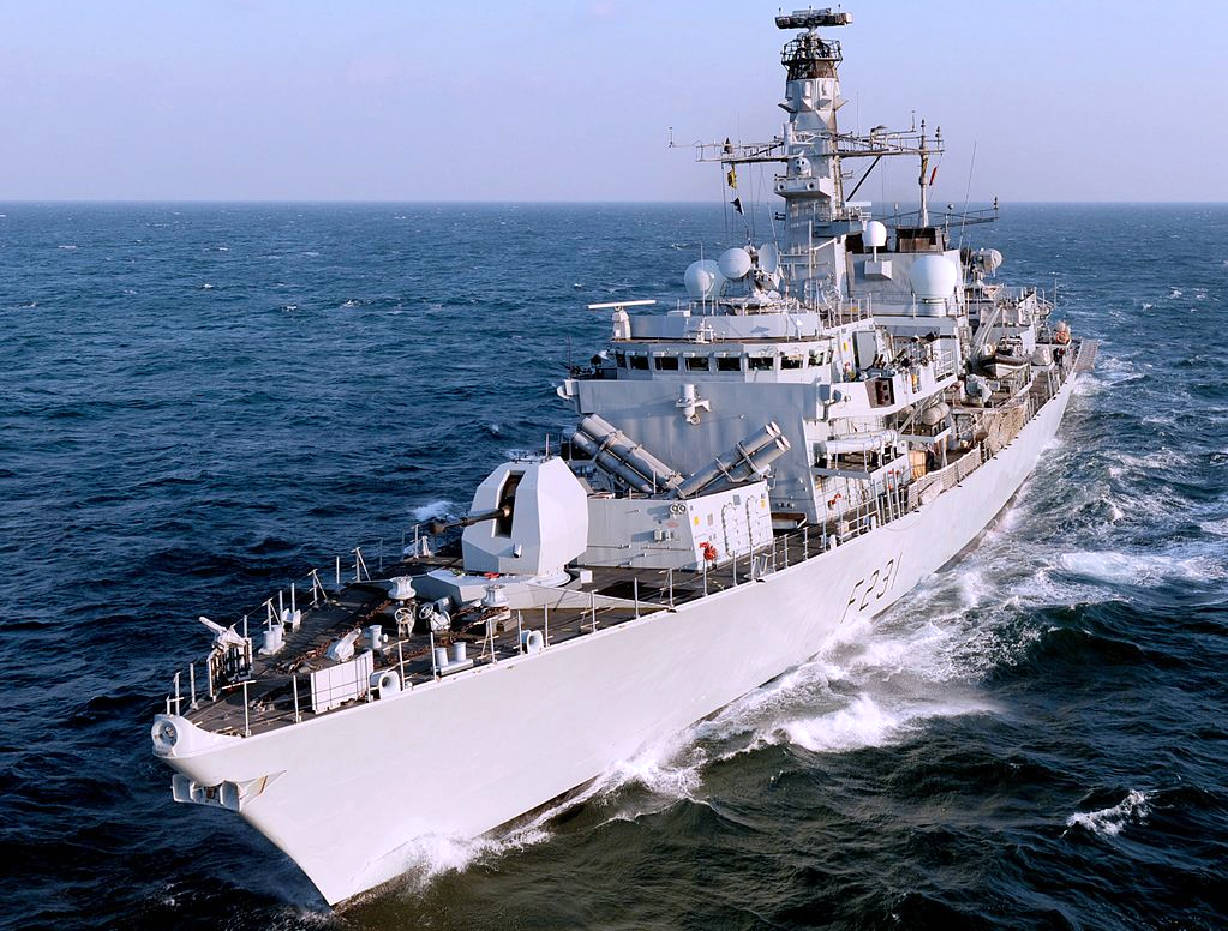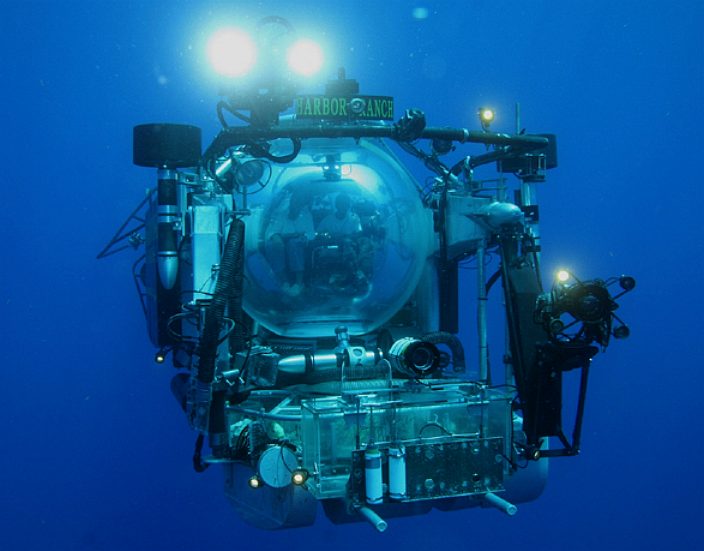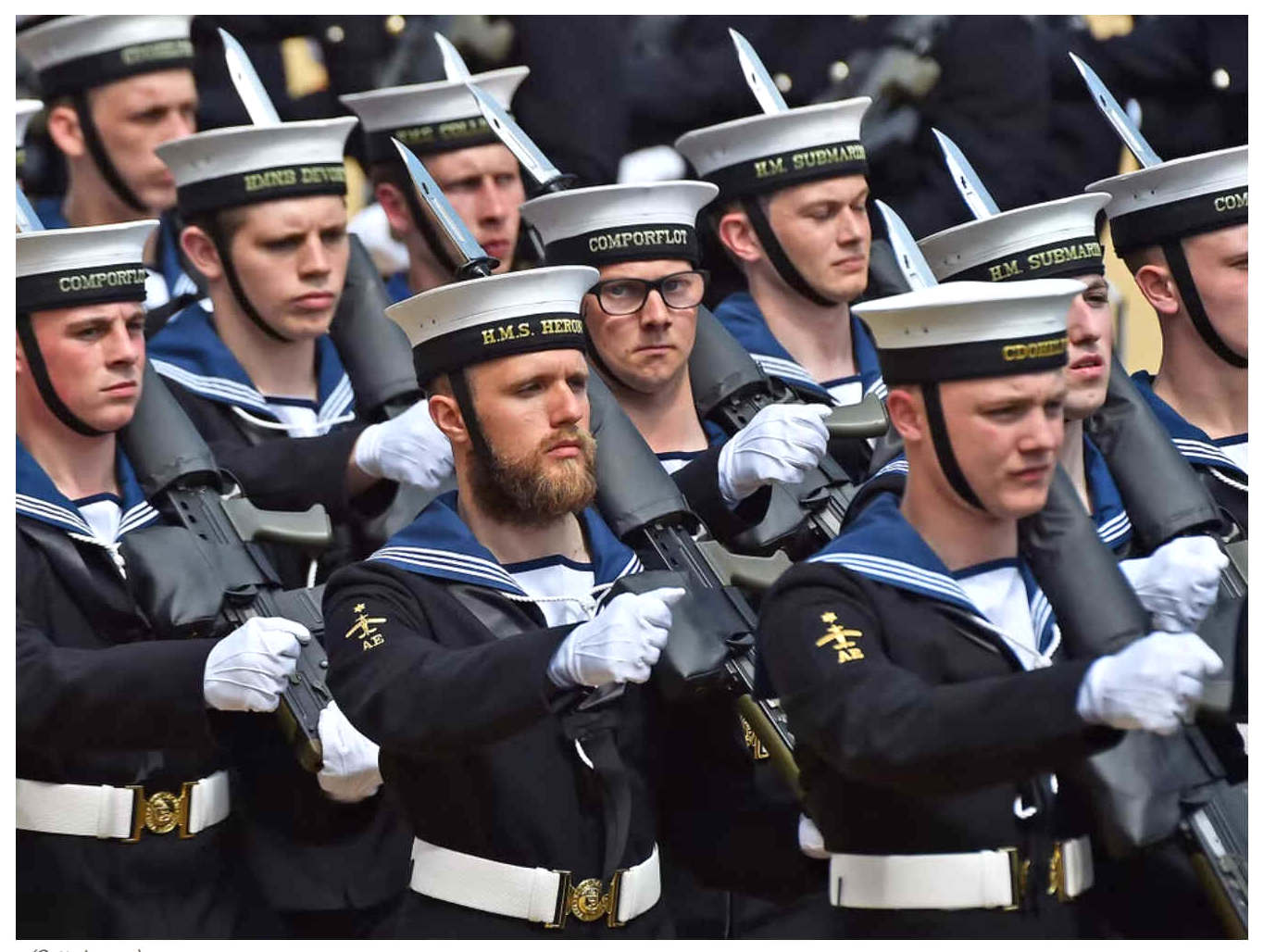Royal
Navy sailors from various ships
The
British Royal Navy is known as the Senior Service, since
England, joined with Ireland and Scotland to be a naval
force to be reckoned with. In this fictional John
Storm ocean adventure, Commander
James Maynard, on behalf of his
Majesty's Royal Navy, offers to part fund Lord
Huntington's expedition to survey a ship wreck off the
western coast of Haiti, in the Caribbean,
to be known as Operation
Hispaniola. The Navy has more than a passing interest in
the Elizabeth
Swann, to be able to evaluate the solar
and hydrogen
propulsion system, and onboard AI; Hal.
But then, so too has China, Japan, the CIA,
DSTL,
DARPA
and US Navy.
The
Special
Boat Services deals with Black Ops, counter terrorism
and highly classified matters, from where Billy
Bones attained his training, making him a deadly assassin,
where required. He was recruited from the Royal Navy
Marines.
RN
SUMMARY
The
Royal Navy (RN) is the United Kingdom's naval warfare force.
Although warships were used by English and Scottish kings
from the early medieval period, the first major maritime
engagements were fought in the Hundred Years' War against
France. The modern Royal Navy traces its origins to the
early 16th century; the oldest of the UK's armed services,
it is consequently known as the Senior Service.
From the middle decades of the 17th century, and through the
18th century, the Royal Navy vied with the Dutch Navy and
later with the
French Navy
for maritime supremacy. From the mid-18th century until the
Second World
War, it was the world's most powerful navy. The Royal
Navy played a key part in establishing and defending the
British
Empire, and four Imperial fortress colonies and a string
of imperial bases and coaling stations secured the Royal
Navy's ability to assert naval superiority globally. Owing
to this historical prominence, it is common, even among
non-Britons, to refer to it as "the Royal Navy"
without qualification. Following
World War
I, it was significantly reduced in size, although at the
onset of
World War II
it was still the world's largest. During the Cold War, the
Royal Navy transformed into a primarily anti-submarine
force, hunting for Soviet submarines and mostly active in
the GIUK gap. Following the collapse of the Soviet Union,
its focus has returned to expeditionary operations around
the world and it remains one of the world's foremost
blue-water navies.
The Royal Navy maintains a fleet of technologically sophisticated ships, submarines, and aircraft, including 2 aircraft carriers, 2 amphibious transport docks, 4 ballistic missile submarines (which maintain the nuclear deterrent), 6 nuclear fleet
submarines, 6 guided missile destroyers, 12 frigates, 9 mine-countermeasure vessels and 26 patrol vessels. As of March 2023, there are 71 operational commissioned ships (including submarines as well as one historic ship, HMS Victory) in the Royal Navy, plus 13 ships of the Royal Fleet Auxiliary (RFA); there are also five Merchant Navy ships available to the RFA under a private finance initiative. The RFA replenishes Royal Navy warships at sea, and augments the Royal Navy's amphibious warfare capabilities through its three Bay-class landing ship vessels. It also works as a force multiplier for the Royal Navy, often doing patrols that frigates used to do.
The Royal Navy is part of His
Majesty's Naval Service, which also includes the Royal Marines. The professional head of the Naval Service is the First Sea Lord who is an admiral and member of the Defence Council of the United Kingdom. The Defence Council delegates management of the Naval Service to the Admiralty Board, chaired by the Secretary of State for Defence. The Royal Navy operates from three bases in Britain where commissioned ships and
submarines are based: Portsmouth, Clyde and Devonport, the last being the largest operational naval base in Western Europe, as well as two naval air stations, RNAS Yeovilton and RNAS Culdrose where maritime aircraft are based.

AGE OF SAIL
A standing "Navy Royal", with its own secretariat, dockyards and a permanent core of purpose-built warships, emerged during the reign of
Henry
VIII. Under Elizabeth
I, England became involved in a war with Spain, which saw privately owned vessels combining with the Queen's ships in highly profitable raids against Spanish commerce and colonies. The Royal Navy was then used in 1588 to repulse the Spanish Armada, but the English Armada was lost the next year. In 1603, the Union of the Crowns created a personal union between England and Scotland. While the two remained distinct sovereign states for a further century, the two navies increasingly fought as a single force. During the early 17th century, England's relative naval power deteriorated until
Charles I undertook a major programme of
shipbuilding. His methods of financing the fleet contributed to the outbreak of the English Civil War, and the abolition of the monarchy.
The Commonwealth of England replaced many names and symbols in the new Commonwealth Navy, associated with royalty and the high church, and expanded it to become the most powerful in the world. The fleet was quickly tested in the First Anglo-Dutch War (1652–1654) and the Anglo-Spanish War (1654-1660), which saw the conquest of
Jamaica and successful attacks on Spanish
treasure fleets. The 1660 Restoration saw
Charles II rename the Royal Navy again, and started use of the prefix HMS. The Navy remained a national institution and not a possession of the Crown as it had been before. Following the Glorious Revolution of 1688, England joined the War of the Grand Alliance which marked the end of France's brief pre-eminence at sea and the beginning of an enduring British supremacy.
In 1707, the Scottish navy was united with the English Royal Navy. On Scottish men-of-war, the cross of St Andrew was replaced with the Union Jack. On English ships, the red, white, or blue ensigns had the St George's Cross of England removed from the canton, and the combined crosses of the Union flag put in its place. Throughout the 18th and 19th centuries, the Royal Navy was the largest maritime force in the world, maintaining superiority in financing, tactics, training, organisation, social cohesion, hygiene, logistical support and warship design. The peace settlement following the War of the Spanish Succession (1702–1714) granted Britain Gibraltar and Menorca, providing the Navy with
Mediterranean bases. The expansion of the Royal Navy would encourage the British colonization of the Americas, with British (North) America becoming a vital source of
timber for
the Royal
Navy. There was a defeat during the frustrated siege of Cartagena de Indias in 1741. A new French attempt to invade Britain was thwarted by the defeat of their escort fleet in the extraordinary Battle of Quiberon Bay in 1759, fought in dangerous conditions. In 1762, the resumption of hostilities with Spain led to the British capture of Manila and of Havana, along with a Spanish fleet sheltering there. British naval supremacy could however be challenged still in this period by coalitions of other nations, as seen in the American War of Independence. The United States was allied to France, and the Netherlands and Spain were also at war with Britain. In the Battle of the Chesapeake, the British fleet failed to lift the French blockade, resulting in the surrender of an entire British army at Yorktown.
The French Revolutionary and Napoleonic Wars (1793–1801, 1803–1814 & 1815) saw the Royal Navy reach a peak of efficiency, dominating the navies of all Britain's adversaries, which spent most of the war blockaded in port. Under Lord Nelson, the navy defeated the combined Franco-Spanish fleet at Trafalgar (1805). Ships of the line and even frigates, as well as manpower, were prioritised for the naval war in Europe, however, leaving only smaller vessels on the North America Station and other less active stations, and a heavy reliance upon impressed labour. This would result in problems countering large, well-armed
United States Navy frigates which outgunned Royal Naval vessels in single-opponent actions, as well as United States privateers, when the American War of 1812 broke out concurrent with the war against Napoleonic France and its allies. The Royal Navy still enjoyed a numerical advantage over the former colonists on the
Atlantic, and from its base in
Bermuda it blockaded the Atlantic seaboard of the United States throughout the war and carried out (with Royal Marines, Colonial Marines, British Army, and Board of Ordnance military corps units) various amphibious operations, most notably the Chesapeake campaign. On the Great Lakes, however, the United States Navy established an advantage.

ROVs
or UUVs - Are generally smaller unmanned underwater vessels,
than their crewed counterparts,
without life support, making them cheaper to build and
operate.


